Crate Training Your Golden Retriever Pitbull Mix: A Comprehensive Guide
As a responsible pet parent, you want the best care and training for your furry friend. If you own a Golden Retriever Pitbull mix (known as “Golden Pit”), then you know this breed requires proper socialization and training to maintain its energy level. In this comprehensive guide, we’ll explore the advantages of crate training your Golden Pit and provide step-by-step instructions on how to do so successfully.
Why Crate Training Is Beneficial
Crate training is one of the most popular methods for training dogs, and for good reason. There are numerous advantages to crate training your furry friend – particularly if you own a Golden Retriever Pitbull mix.
Crate training can offer your pup extra protection when you’re away from home. By giving them a secure space to sleep or rest, crate training helps prevent them from getting into household hazards such as electrical cords or cleaning products. Furthermore, keeping your pup separated from other household animals may protect them if they’re not familiar with one another.
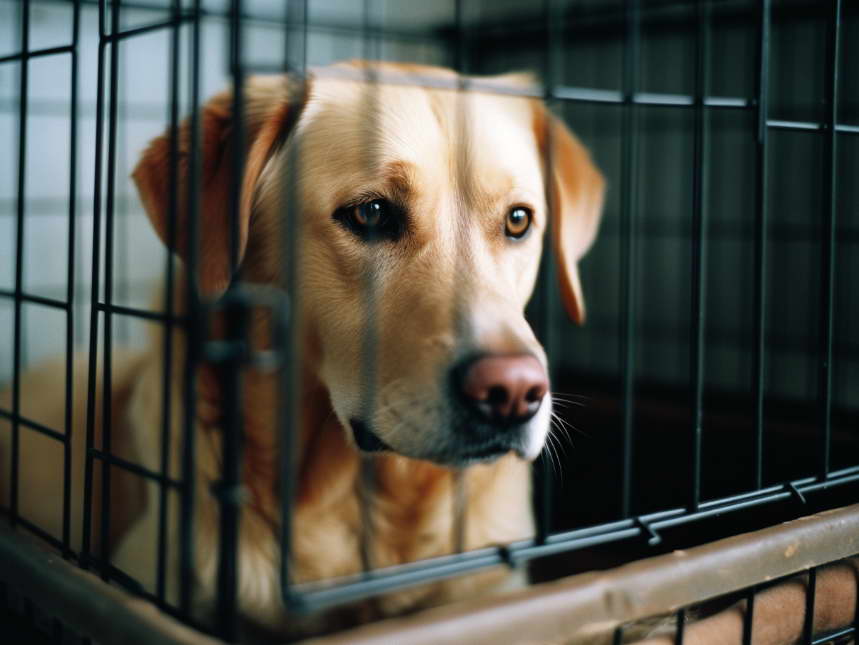
Crates provide your pup with a sense of comfort and security, as dogs thrive in enclosed spaces. By giving your pup their own space to relax, rest, and feel secure, you can reduce their anxiety levels and make them more at ease in their environment.
Thirdly, crates can be useful for house training your pup. Dogs naturally try to avoid soiling their sleeping area; by using a crate, you can teach your pup to hold its bladder and bowels until you take them outside. This method works especially well if you have limited time but still want your pup outside regularly.
Fourthly, crates can be invaluable when traveling with your pup. A crate provides a secure and comfortable space for them while being transported in the car or plane; additionally, it may help reduce their anxiety during long trips.
Finally, crate training can be beneficial for dogs with separation anxiety. This common issue affects many dogs when their owners leave the house, and a crate provides your pup with a sense of security while you’re gone.
Crate Training Your Golden Pit How-to?
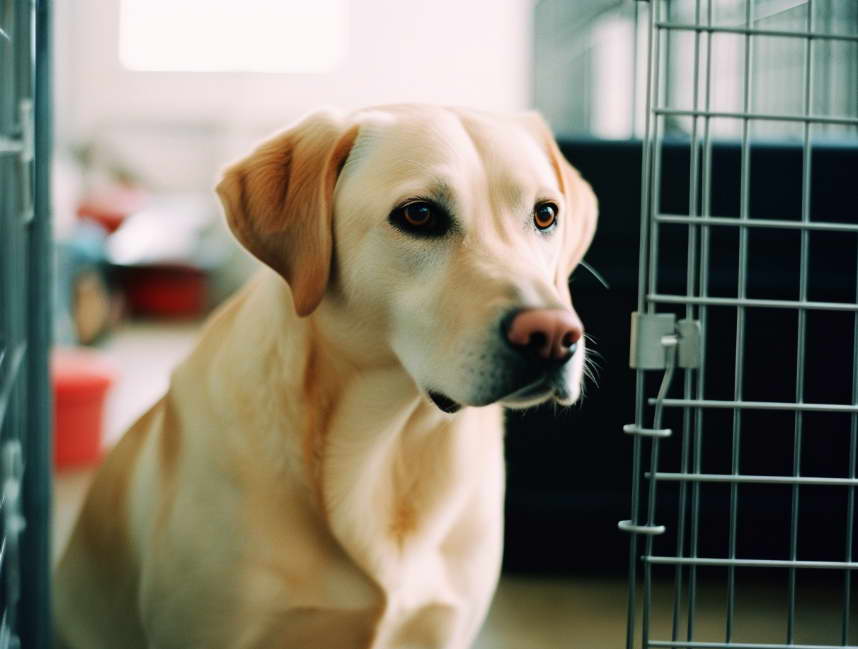
Crate training your Golden Retriever Pitbull mix can be an effective way to provide them with a secure and comfortable space while teaching them good behavior. Here are some steps you can take to successfully crate train your pup:
- Select the Appropriate Crate: The initial step in crate training your dog is selecting the appropriate size crate. It should be big enough for them to stand up, turn around, and lie comfortably inside but not so large that one end becomes their bathroom.
- Introduce the Crate: Once you have chosen the perfect crate for your pup, introduce it slowly. Fill it with treats, toys, and a cozy blanket so that it feels inviting – but do not pressure them into entering yet. Allow them to explore at their own pace without pushing them inside.
- Feed Your Pup in the Crate: To create a positive association with the crate, begin feeding your pup inside with the door open. As they get used to eating in their penis, gradually move their food dish further inside and eventually close the door while they finish eating.
- Gradually Increase Crate Time: Begin by leaving your pup in the crate for short periods (such as 10-15 minutes) when you are home. Gradually increase their time spent in the crate and eventually have them stay there when you leave for work or other places.
- Ignore Whining or Barking: Your pup may whine or bark when first placed in the crate, but it is essential not to give in to their demands. Giving in reinforces bad behavior and makes training harder.
- Positive Reinforcement: Accolade and reward your pup when they enter the crate on their own and remain calm while inside. Doing this will reinforce good behavior and help them associate crate time with positive experiences.
- Do Not Use the Crate as Punishment: Your pup should feel secure and at home in his crate, not as a punishment. Avoid using it to discipline your dog as this could create negative associations with it.
By following these steps and being patient and consistent in your training, you can successfully crate train your Golden Retriever Pitbull mix. Make sure that the crate always brings positive experiences for your furry friend; make it a comfortable and welcoming space for them to hang out in.
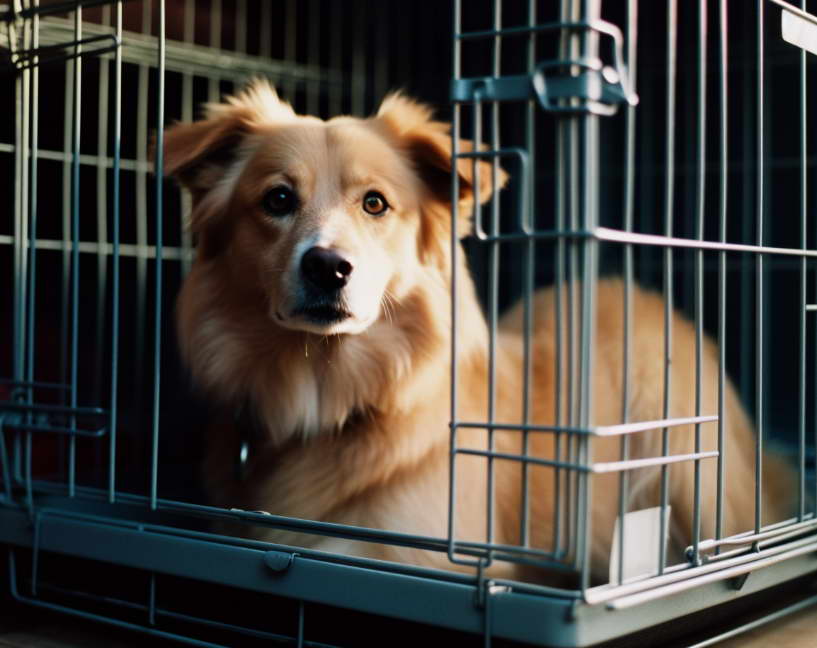
Final thoughts
Crate training your Golden Retriever Pitbull mix can be an effective way to provide them with a secure and comfortable space while teaching them good behavior. By following the steps outlined above and being patient and consistent during training, you can successfully crate-train your furry friend.
Remember that crate training should always be a positive experience for your pup. Use positive reinforcement such as treats and praise to reward good behavior, never using the crate as punishment.
Be mindful that every dog is different and may require a unique approach to crate training. Some may take more time to adjust than others to the crate, while others take off quickly. Be patient and adjust your training according to your pup’s individual needs.
Overall, crate training your Golden Retriever Pitbull mix can be a beneficial tool for both of you. It provides them with a secure and comfortable space while teaching them good behavior and helping prevent destructive behavior when left alone. With patience, consistency, and positive reinforcement, you can successfully crate-train your furry friend.
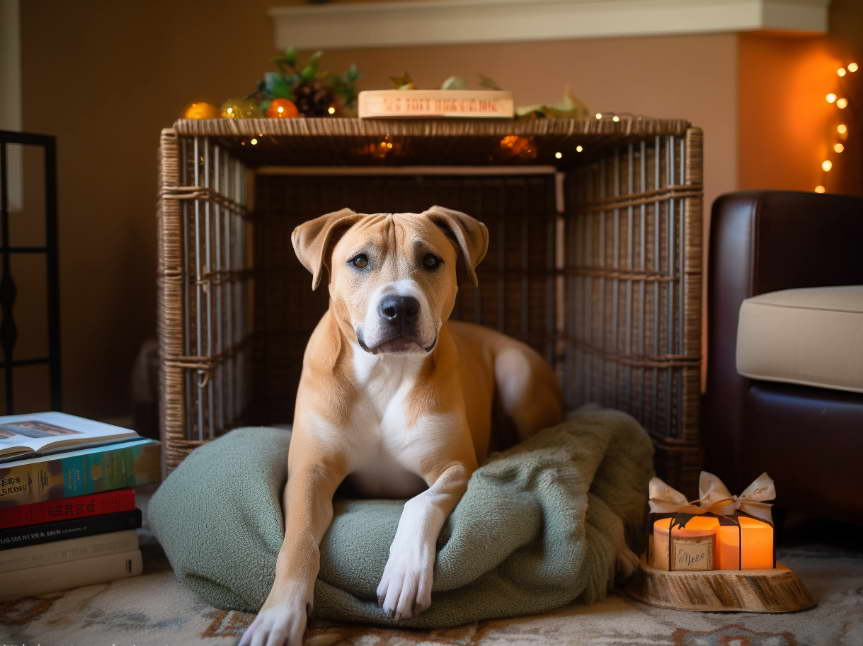
FAQs
- How long should I leave my Golden Retriever Pitbull mix in a crate?
It is recommended that you do not leave your pup in its crate for more than 4 to 5 hours at a time. Puppies and younger dogs may require to be let out more frequently for potty breaks. - Should I Use a Crate as Punishment?
Not! Never use your dog’s crate as punishment; instead, make it an encouraging and secure space that promotes positive reinforcement instead of fear or discomfort. - How Do I Select the Appropriate Size Crate For My Dog?
Your dog’s crate should be big enough for them to stand, turn around, and lie comfortably inside it. Ensure the size is not too big or small. - How long does it take to crate train a dog?
Crate training your pup can vary based on their individual needs. Some dogs may adjust quickly while others need more time. Consistency and patience are the keys to successful crate training. - Can crate training help with separation anxiety?
Crate training can be a beneficial tool in relieving dogs of separation anxiety. By providing them with a secure and comfortable space to rest in, they may feel more secure when left alone. But it’s essential that you introduce the crate gradually and gradually increase the time spent inside it to avoid further stirring up feelings of fear or unease.
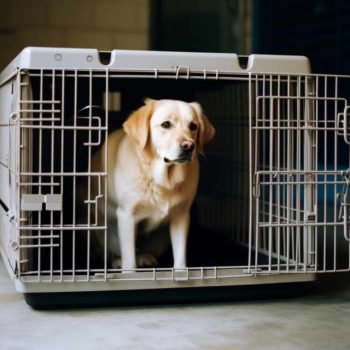
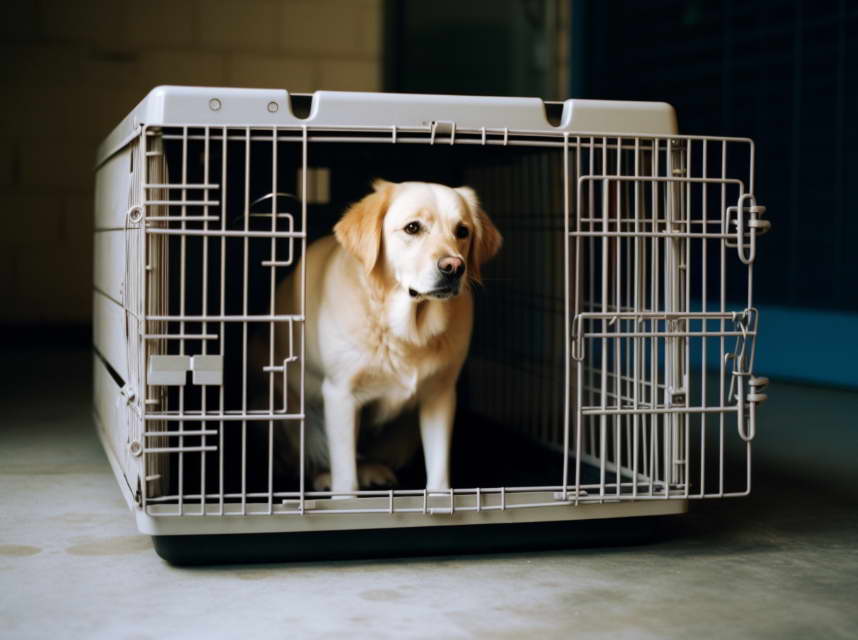
Leave a Reply